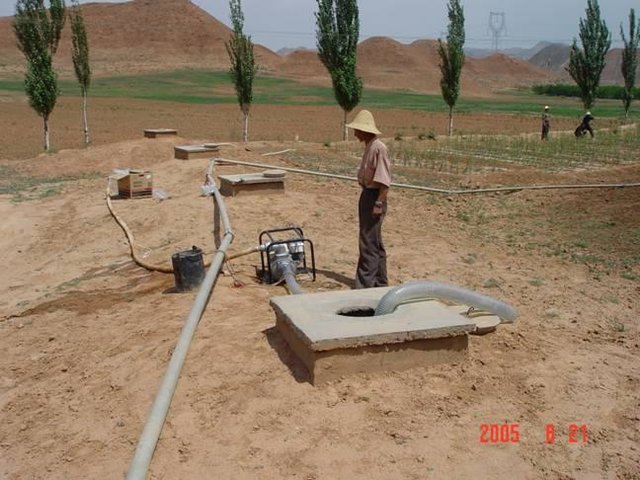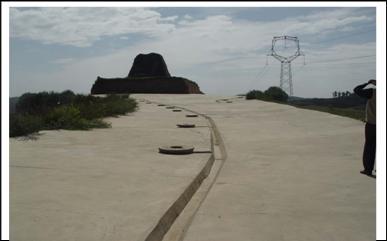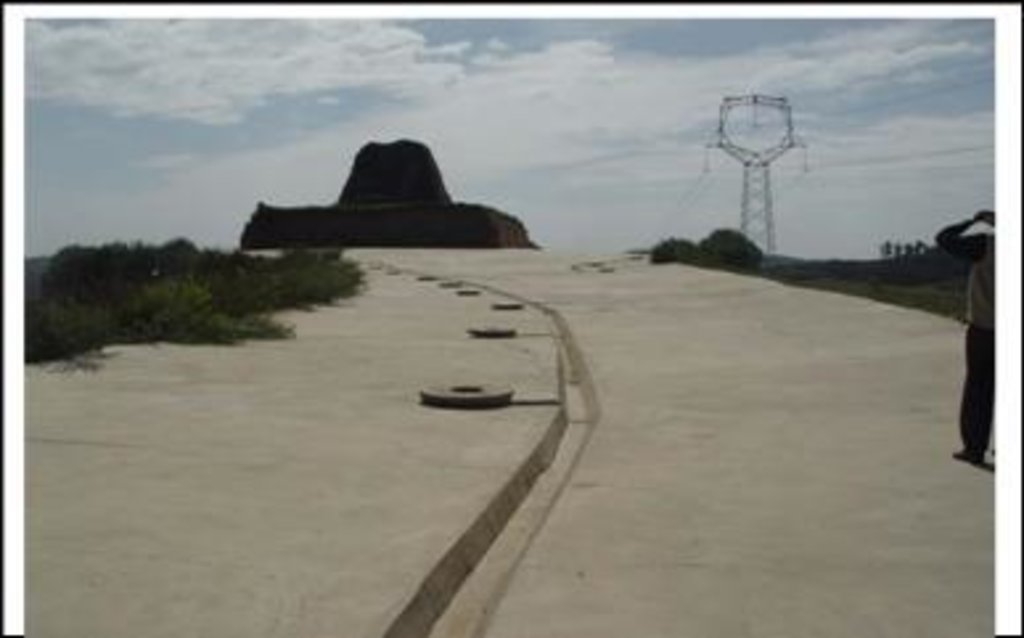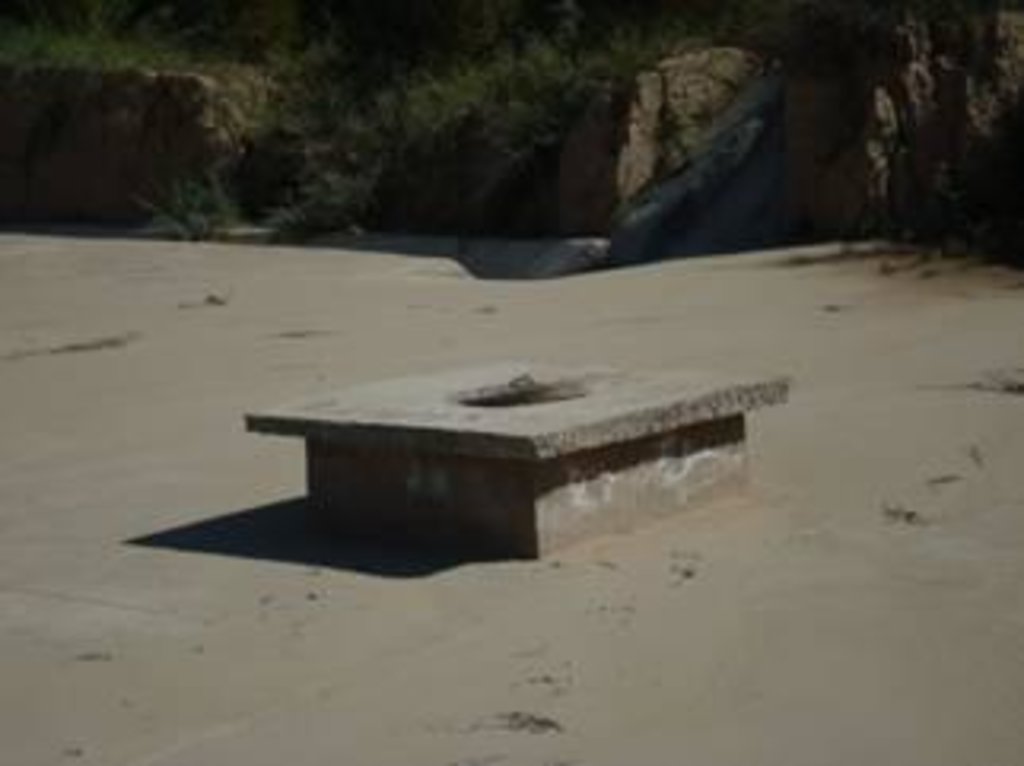Rainwater Cellars [China]
- Creation:
- Update:
- Compiler: Anna Schuler
- Editor: –
- Reviewer: Deborah Niggli
technologies_1335 - China
View sections
Expand all Collapse all1. General information
1.2 Contact details of resource persons and institutions involved in the assessment and documentation of the Technology
Name of project which facilitated the documentation/ evaluation of the Technology (if relevant)
Best Practices for Land Degradation Control in Dryland Areas of China (Best Practices China)1.3 Conditions regarding the use of data documented through WOCAT
When were the data compiled (in the field)?
13/09/2007
The compiler and key resource person(s) accept the conditions regarding the use of data documented through WOCAT:
Yes
1.4 Declaration on sustainability of the described Technology
Is the Technology described here problematic with regard to land degradation, so that it cannot be declared a sustainable land management technology?
No
1.5 Reference to Questionnaire(s) on SLM Approaches

Rainwater Cellars introduced through government support [China]
Government takes the lead and propelled by project, the rainwater collection for irrigation technology scales up by demonstration.
- Compiler: Anna Schuler
2. Description of the SLM Technology
2.1 Short description of the Technology
Definition of the Technology:
The use of courtyard, roof, road surface, slope, etc. as catchments to collect rainwater for underground water storage for future supply of cropland irrigation as well as drinking water for humans and livestock.
2.2 Detailed description of the Technology
Description:
The demonstration site is located in mid Gansu, semi-arid gully area of the Loess Plateau, where either surface or groundwater is in great shortage. The annual precipitation is around 380mm with 60% concentrated in July, August and September in storm form. Due to scarce vegetation and serious soil erosion. The agricultural farming is rainfed, but the timing of precipitation and water demand of crops do not coincide, so that the rainwater utilization is extremely low. Low productivity of land and shortage of water for mankind and animal leads to poverty. Since 1980s the government has organized local people in mid Gansu to explore the utilization of water cellars to achieve coincided precipitation, i.e. collecting rainwater to solve water shortage and develop dryland crop cultivation.
Water cellars are used mainly for the interception of rainwater to supply water for humans and livestock as well as for the irrigation of crops. The cellar is comprised of the cellar body and an ancillary facility, including catchment area, delivery facility (ditch, silt tank, stain interception grate, inlet pipe, cellar opening and irrigation equipment). In general, water cellars are designed to 20-30m3 in capacity. The catchment should be chosen at hillside, road surface, courtyard, roofing, greenhouse roof, etc. For the location selection, considerations should be given to site landform and geological conditions and not proximity to ditch or trench banks, large tree stumps but close to farmland to maximize the possibility of self-flowing irrigation. In consideration of drinking water safety, the cellar should be built far from livestock sheds and toilets to prevent contamination. The silt tank is 2-3m wide, 1m deep and 2-3m away from the cellar opening, and higher than water cellar inlet. The dirt interception grate should be installed 0.5m higher than the base of the silt tank pond and upstream of the inlet. The platform of the water cellar should be 0.3-0.5m high above ground. In Anding District, the concrete cement sphere type water cellar is more often adopted, with the cellar vault/wall of 10cm and base of 20cm thick. At the demonstration site, the inner wall used to be lined with red puddle. Now concrete cement is used for the base and lined with cement and mortar. The water for irrigation does not need special treatment, but drinking water does. Irrigation is done by pumping for watering by ditches flowing to the farmland, hole watering or drip irrigation.
Since mid 1990s, the water cellar has expanded gradually. The 1-2-1 rainwater collection project (each household has 1 catchment, 2 water cellars and 1 patch of courtyard cashcrop forest) has played a significant role in the technology dissemination and poverty alleviation. Since 2000, water cellar function has been further extended toward multifunction for livestock raising, farmland/forest land irrigation and so forth, and greater economic and social benefits are captured by its combination with greenhouse development. Plastic film greenhouse roof was used as the catchment and two water cellars (30 cubic meters capacity for each) were set for each greenhouse. In combination with other technologies of mulched ditch irrigation or drip irrigation, water resource utilization has been tremendously increased. The technology has thereby triggered industrial restructuring as outstanding pilot sites for high benefit agricultural development.
2.3 Photos of the Technology
2.5 Country/ region/ locations where the Technology has been applied and which are covered by this assessment
Country:
China
Region/ State/ Province:
Gansu Province
Further specification of location:
Anding District, Dingxi City
3. Classification of the SLM Technology
3.1 Main purpose(s) of the Technology
- improve production
3.2 Current land use type(s) where the Technology is applied

Mixed (crops/ grazing/ trees), incl. agroforestry
- Agro-pastoralism
Comments:
Major land use problems (compiler’s opinion):
- low precipitation, deficient groundwater, arid and short of water supply;
- rainfall in form of storms to form runoff arousing serious soil and water erosion;
- low and unstable land productivity because of aridness and soil infertility.
3.3 Further information about land use
Specify:
Longest growing period in days: 140, Longest growing period from month to month: May to October
3.4 SLM group to which the Technology belongs
- irrigation management (incl. water supply, drainage)
- water diversion and drainage
3.5 Spread of the Technology
Comments:
Total area covered by the SLM Technology is 3638.7 m2.
4. Technical specifications, implementation activities, inputs, and costs
4.5 Costs and inputs needed for establishment
| Specify input | Unit | Quantity | Costs per Unit | Total costs per input | % of costs borne by land users | |
|---|---|---|---|---|---|---|
| Labour | labour | 1.0 | 140.0 | 140.0 | ||
| Equipment | steel bar | 1.0 | 26.7 | 26.7 | ||
| Construction material | sand gravel | 1.0 | 33.3 | 33.3 | ||
| Construction material | concrete cement | 1.0 | 40.0 | 40.0 | ||
| Construction material | bricks | 1.0 | 5.3 | 5.3 | ||
| Other | transportation | 1.0 | 26.7 | 26.7 | ||
| Total costs for establishment of the Technology | 272.0 | |||||
4.7 Costs and inputs needed for maintenance/ recurrent activities (per year)
| Specify input | Unit | Quantity | Costs per Unit | Total costs per input | % of costs borne by land users | |
|---|---|---|---|---|---|---|
| Labour | labour | 1.0 | 23.3 | 23.3 | 100.0 | |
| Other | transportation | 1.0 | 2.67 | 2.67 | 100.0 | |
| Total costs for maintenance of the Technology | 25.97 | |||||
5. Natural and human environment
5.1 Climate
Annual rainfall
- < 250 mm
- 251-500 mm
- 501-750 mm
- 751-1,000 mm
- 1,001-1,500 mm
- 1,501-2,000 mm
- 2,001-3,000 mm
- 3,001-4,000 mm
- > 4,000 mm
Agro-climatic zone
- semi-arid
5.2 Topography
Slopes on average:
- flat (0-2%)
- gentle (3-5%)
- moderate (6-10%)
- rolling (11-15%)
- hilly (16-30%)
- steep (31-60%)
- very steep (>60%)
Landforms:
- plateau/plains
- ridges
- mountain slopes
- hill slopes
- footslopes
- valley floors
Altitudinal zone:
- 0-100 m a.s.l.
- 101-500 m a.s.l.
- 501-1,000 m a.s.l.
- 1,001-1,500 m a.s.l.
- 1,501-2,000 m a.s.l.
- 2,001-2,500 m a.s.l.
- 2,501-3,000 m a.s.l.
- 3,001-4,000 m a.s.l.
- > 4,000 m a.s.l.
5.3 Soils
Soil depth on average:
- very shallow (0-20 cm)
- shallow (21-50 cm)
- moderately deep (51-80 cm)
- deep (81-120 cm)
- very deep (> 120 cm)
Soil texture (topsoil):
- fine/ heavy (clay)
Topsoil organic matter:
- medium (1-3%)
5.6 Characteristics of land users applying the Technology
Market orientation of production system:
- mixed (subsistence/ commercial
5.8 Land ownership, land use rights, and water use rights
Land ownership:
- state
- group
Land use rights:
- individual
6. Impacts and concluding statements
6.1 On-site impacts the Technology has shown
Socio-economic impacts
Other socio-economic impacts
Short term economic burden
6.2 Off-site impacts the Technology has shown
Reduce silt inflow of the downstream
Runoff decease of the downstream
6.4 Cost-benefit analysis
How do the benefits compare with the establishment costs (from land users’ perspective)?
Short-term returns:
negative
Long-term returns:
positive
How do the benefits compare with the maintenance/ recurrent costs (from land users' perspective)?
Short-term returns:
positive
Long-term returns:
positive
6.7 Strengths/ advantages/ opportunities of the Technology
| Strengths/ advantages/ opportunities in the compiler’s or other key resource person’s view |
|---|
| Intercept and retain runoff and reduce soil and water losses |
| Supplementary irrigation to the cropland for higher production |
6.8 Weaknesses/ disadvantages/ risks of the Technology and ways of overcoming them
| Weaknesses/ disadvantages/ risks in the compiler’s or other key resource person’s view | How can they be overcome? |
|---|---|
| High initial establishment cost | seek more project support |
7. References and links
7.1 Methods/ sources of information
- field visits, field surveys
- interviews with land users
7.2 References to available publications
Title, author, year, ISBN:
Wang Lin, Water cellar Construction technology for rainwater collection and water-saving irrigation in the mountainous areas, Gansu water conservancy and hydro power technology. 2002 38(4)
Links and modules
Expand all Collapse allLinks

Rainwater Cellars introduced through government support [China]
Government takes the lead and propelled by project, the rainwater collection for irrigation technology scales up by demonstration.
- Compiler: Anna Schuler
Modules
No modules




